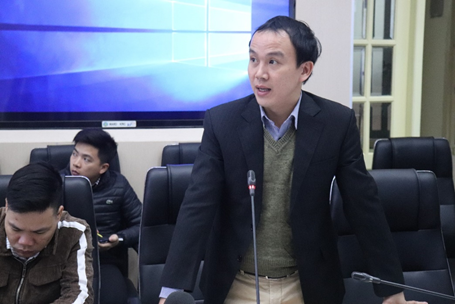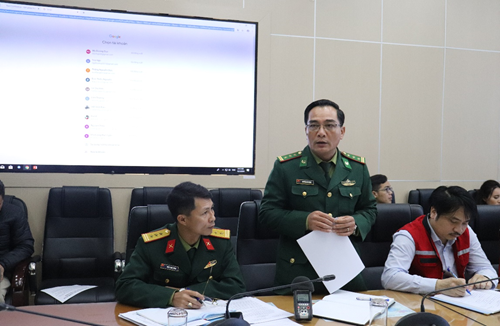The meeting was chaired by Deputy Head of the Office of the Central Steering Committee for Natural Disaster Prevention and Control Nguyen Truong Son
According to the Deputy Director of the National Center for Hydrometeorological Forecasting, typhoon Kammuri would hit the eastern area of the East Sea in December 3 evening with the wind at level 12, gusting at level 15. It moved to the West Northwest at 15-20km/h and its intensity would decrease gradually. During December 4 night and December 5 morning, typhoon Kammuri would change its direction, moving to the Southwest at a speed of 5-10 km/h, and its intensity would decrease rapidly.
In December 3 afternoon, the wind would gradually strengthen to level 9-10 in the East and in the middle of the East Sea. The wind in the typhoon center would be at level 11-12, gusting at level 15, the sea wave would be 5-7 meters high.
As influenced by cold air, the north and centre of East Sea (including the Hoang Sa archipelago) and the western area of the southern East Sea (including the western sea area of the Truong Sa archipelago), the Northeast wind was at level 6-7, gusting at level 9. The offshore areas from Quang Tri to Ca Mau provinces would have strong Northeast wind at level 6, gusting at level 7.

The military border guard force was requested to coordinate with the relevant authorities to tally and inform offshore vessels of the typhoon’s developments and urge them to quickly find safe shelter.

The Department of Consular (Ministry of Foreign Affairs) should promptly send a diplomatic note to request the Philippines and relevant agencies to help and support Vietnamese fishermen and vessels to find safe shelters to avoid typhoon.
The Standing Office of the Provincial Commanding Committees for natural disaster prevention and control, search and rescue should organize serious duties to proactively respond to the developments of cold air, strong wind at sea and typhoon Kammuri; regularly report to the Standing Office of the Central Steering Committee for Natural Disaster Prevention and Control and the National Committee for Incidents, Disaster Response, Search and Rescue.
Provinces continue to closely follow up the developments of cold air, the strong wind at sea and the heavy rain in order to proactively implement the response measures.
Lieutenant Colonel Pham Dinh Huong, Deputy Head of the Search and Rescue Division, High Command of Military Border Guard said, to implement the Official Telegraph No. 19 in December 2 of the Standing Office of the Central Steering Committee for Natural Disaster Prevention and Control and the National Committee for Incidents, Disaster Response, Search and Rescue, High Command of Military Border Guard has instructed the military border guards in provinces and cities to call and notify the captains and owners of offshore vessels on the developments of typhoon Kammuri so that they could proactively find shelters and move away from dangerous areas. At the same time, they were requested to tally vessels and be ready to maintain forces and means for prompt response in case of bad situations.